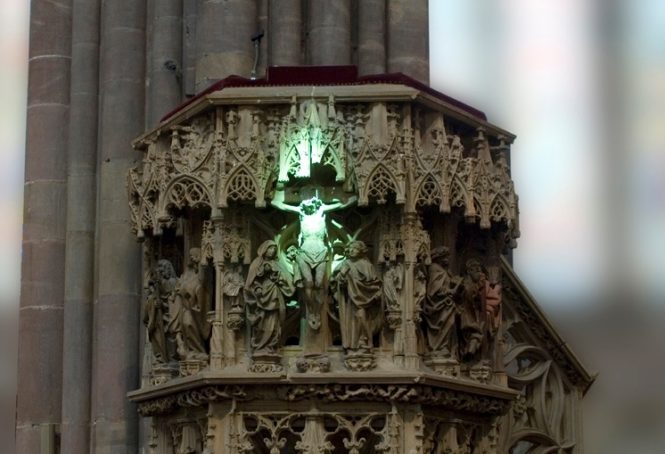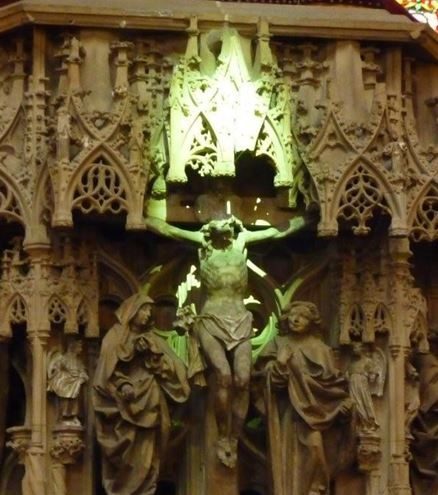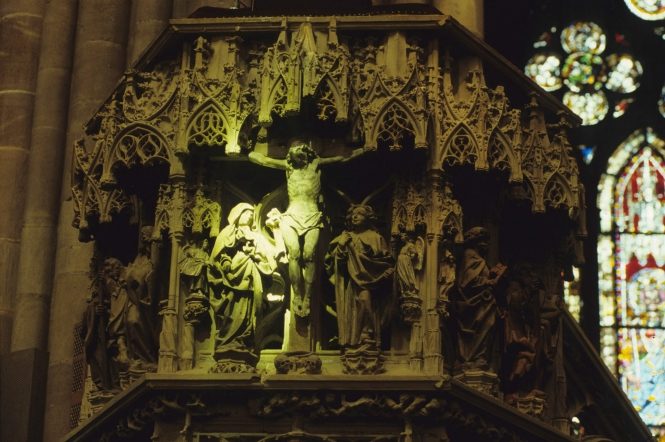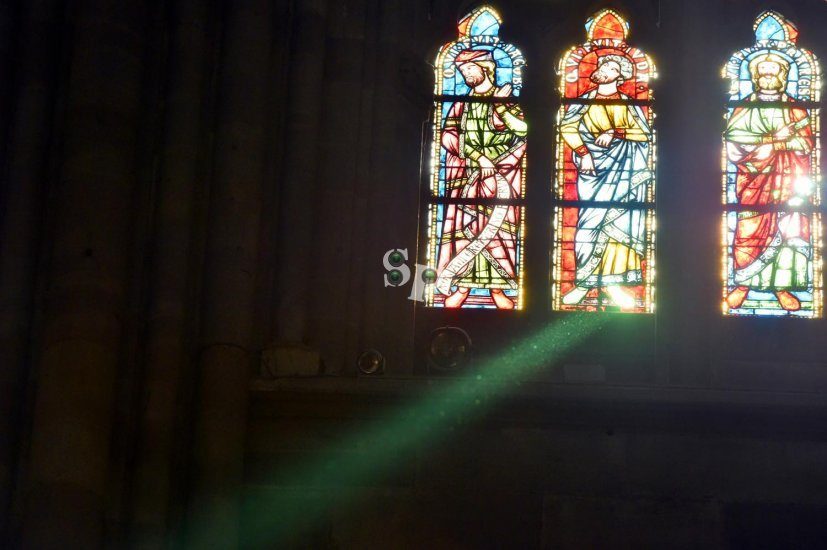Strasbourg Cathedral offers a great chance for visitors and, especially, photographers to catch sight of a twice-a-year phenomenon when, if the sun shines, a ray of green light will fall on the pulpit above the statue of Christ
Engineer Maurice Rosart first spotted the light, which marks the equinox and the start of spring.
If the sun shines, the light will be visible at just after 11.35 for the next few days, falling lower on the statue as the sun rises each day.
In autumn, for the autumn equinox, visitors can see the green light (again, if the sun shines) in the six days preceding the equinox, which happens at 12.24 on September 23.
The green ray as it appeared on March 20, the spring equinox
Comment: Connexion France also reports:
March 20 will be a chance to see a twice-a-year phenomenon in Strasbourg Cathedral when, if the sun shines, a ray of green light will fall on the pulpit above the statue of Christ.From Wiki:
The light, shining through a stained glass window, is said to be part of an astronomical clock and marks the equinox and the start of spring.
First spotted by engineer Maurice Rosart in 1972, the 'clock' is separate from the cathedral's well-known astronomical clock that has animated figures producing a display at 12.30 each day.
The green light appears in March and in September for the spring and autumn equinox when a ray shines through the foot of Juda, one of the sons of Jacob, and on to the pulpit.
It happens at 11.38 for the start of spring and at 12.24 for the start of autumn.
Mr Rosart said: "The green ray is without doubt the work of Gustave Klotz, the architect who oversaw the restoration of the cathedral in 1875, when the stained glass was fitted.
"It is fascinating. He has made use of a natural phenomenon that works whenever the sun shines, whereas the other astronomical clock is mechanical."
Mr Rosart, 80, discovered the Strasbourg ray in 1972 shortly after restoration work replaced the old dim glass in the foot of Juda with a more transparent version
Strasbourg CathedralAlso See:
Construction started: 1015
Completed: 1439
At 142 metres (466 feet), it was the world's tallest building from 1647 to 1874 (227 years), when it was surpassed by St. Nikolai's Church, Hamburg. Today it is the sixth-tallest church in the world and the highest extant structure built entirely in the Middle Ages.
- Cathedral builders reinforced stone with iron
- Britain's peasant houses and the Black Death building boom
- Fascinating discoveries suggest Isle of May was a healing centre for hundreds of years (PHOTOS)
- A treasure trove of birch notes became the Rosetta Stone for Medieval Russia
- Swedish study finds that earth was warmer in ancient Roman times and the Middle Ages than today







Reader Comments